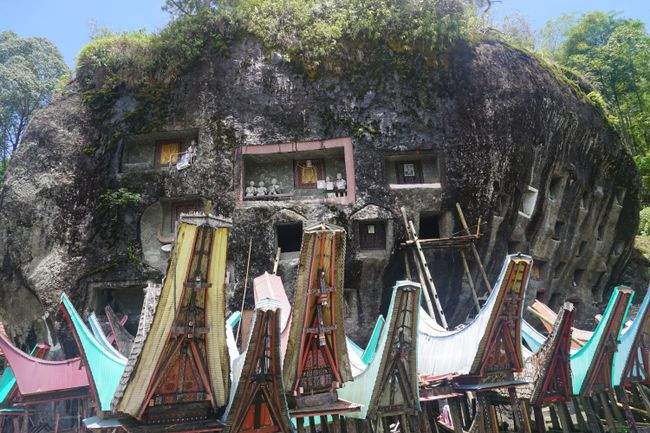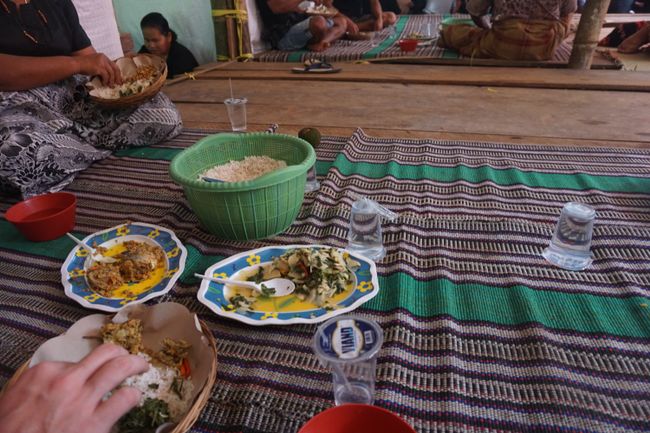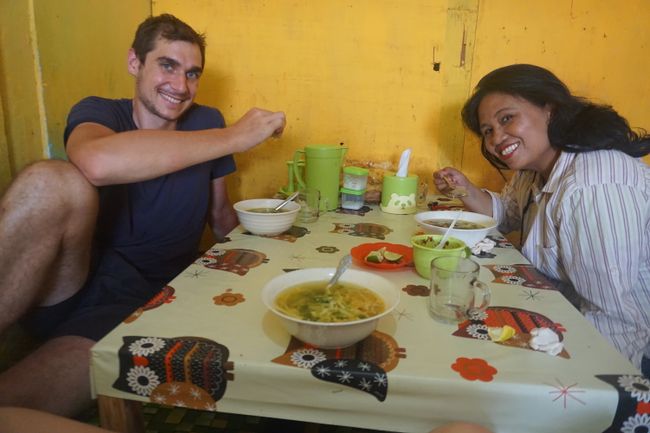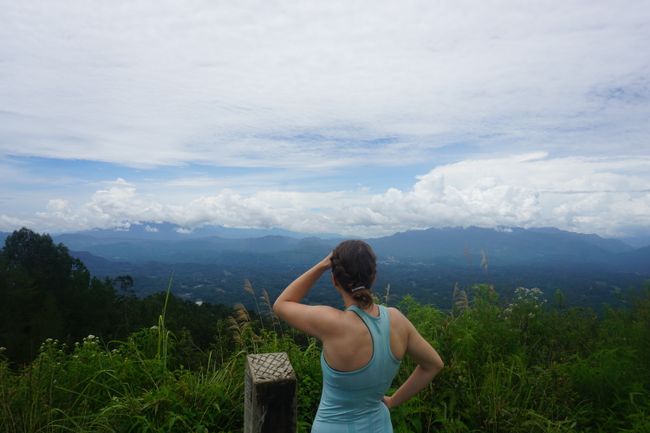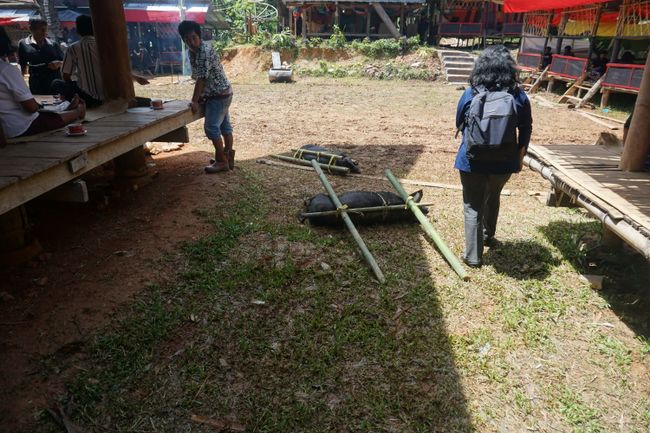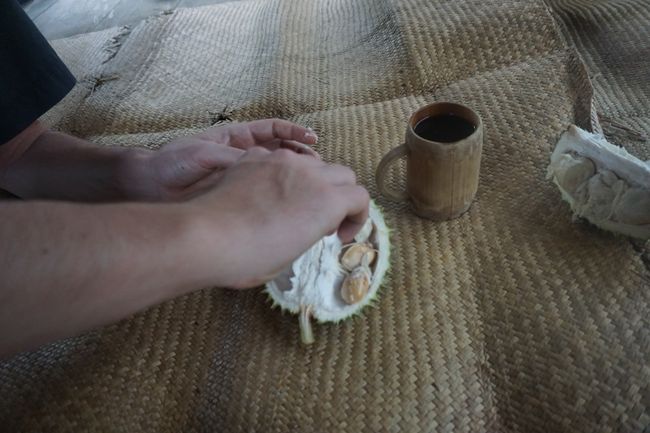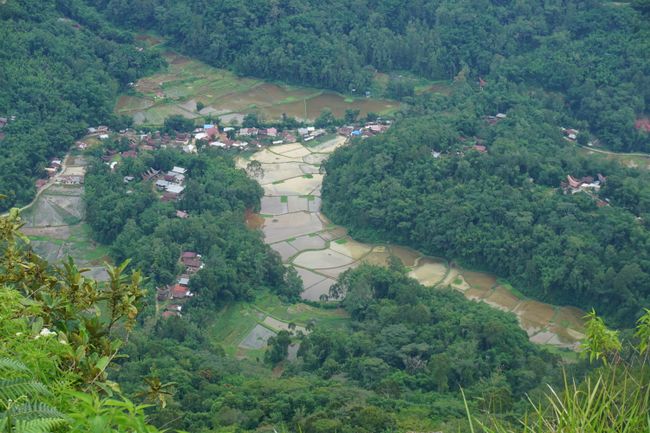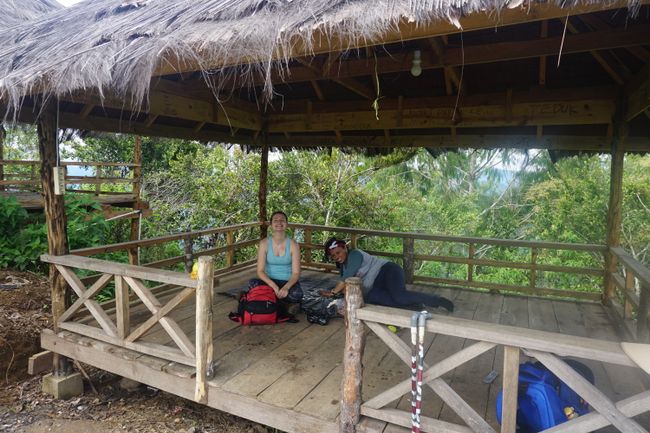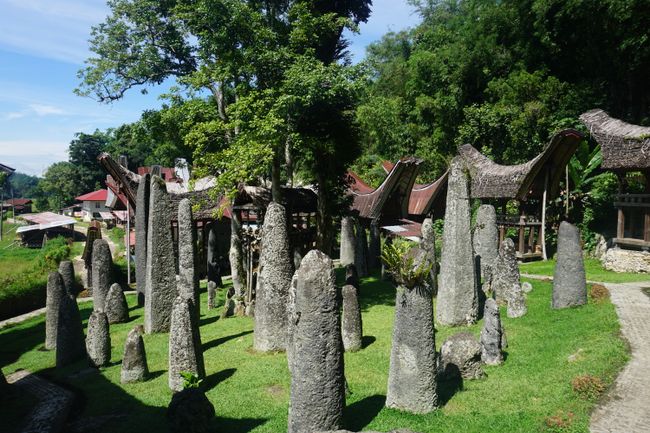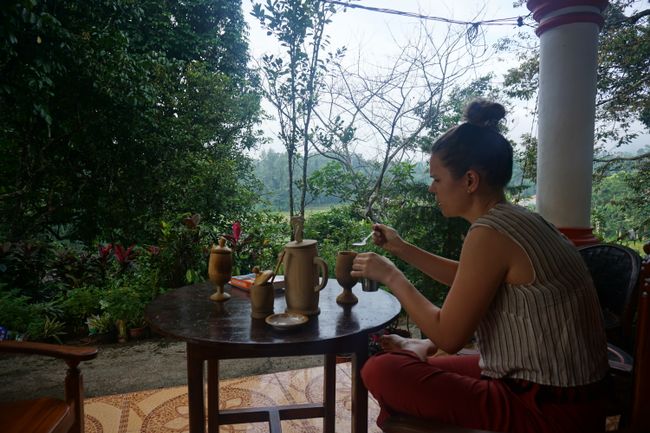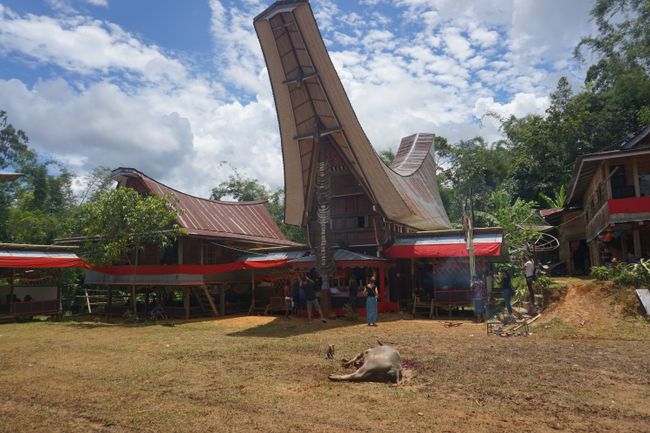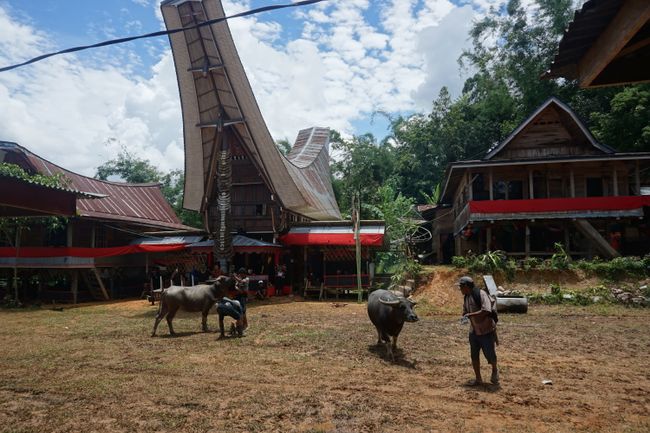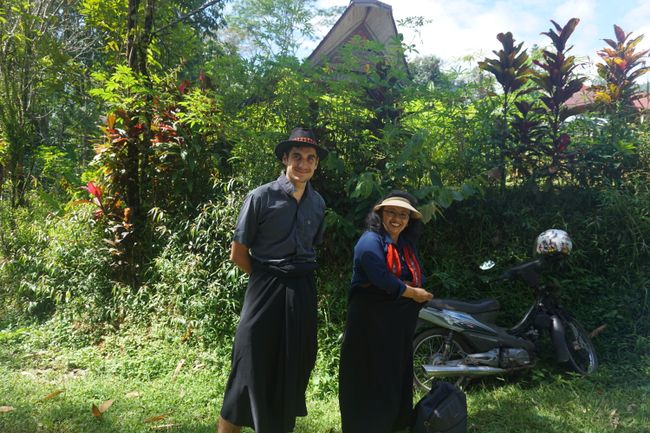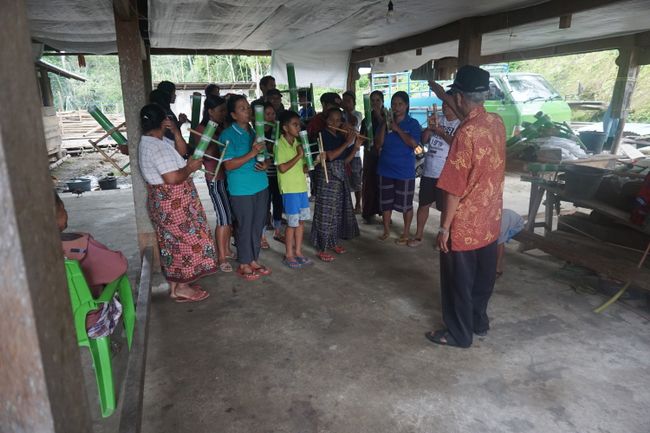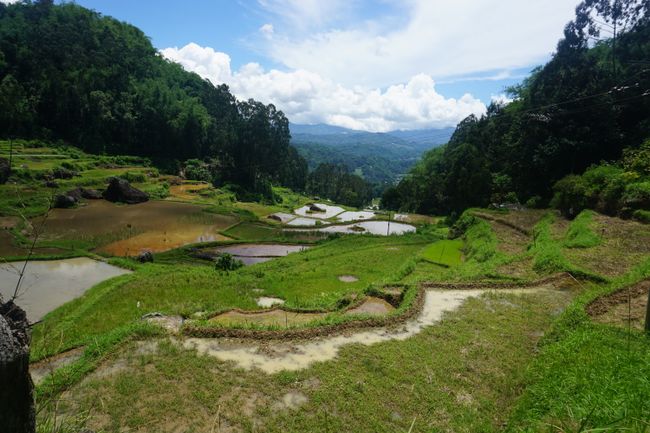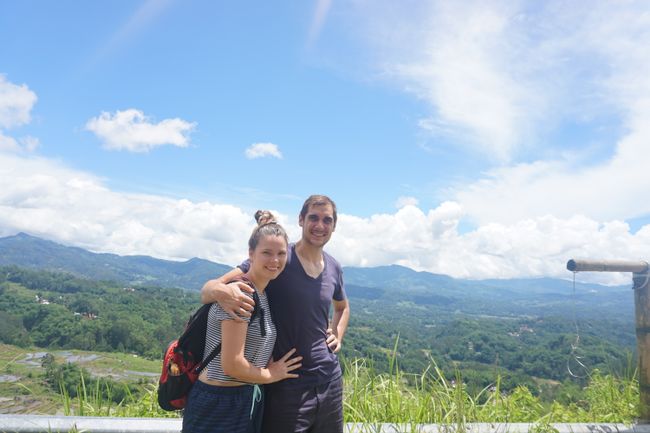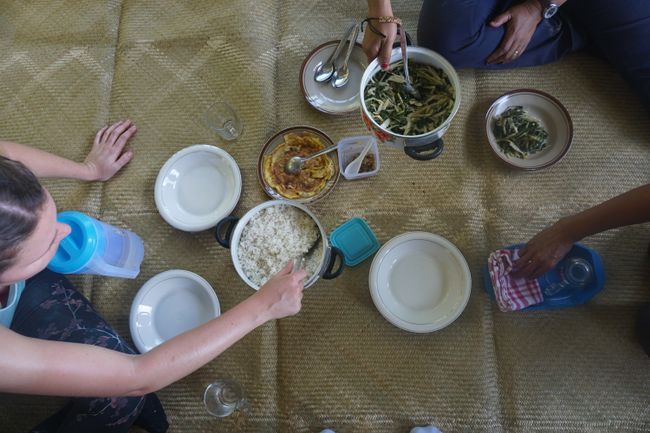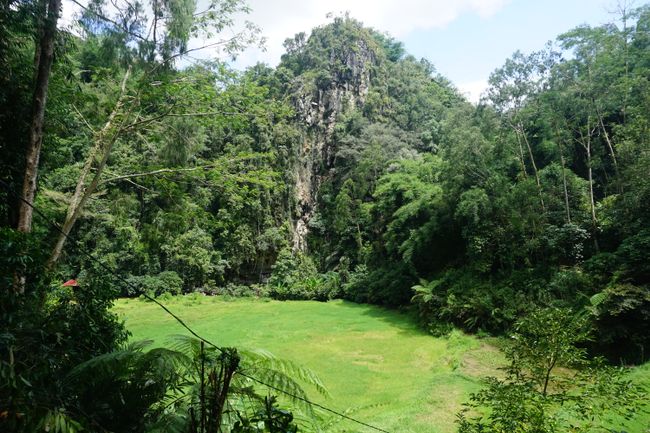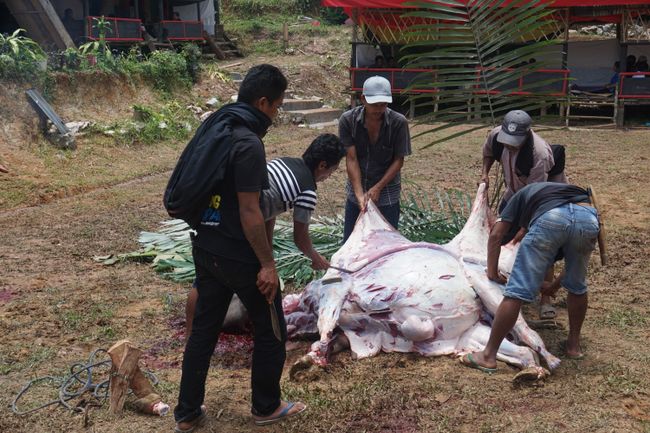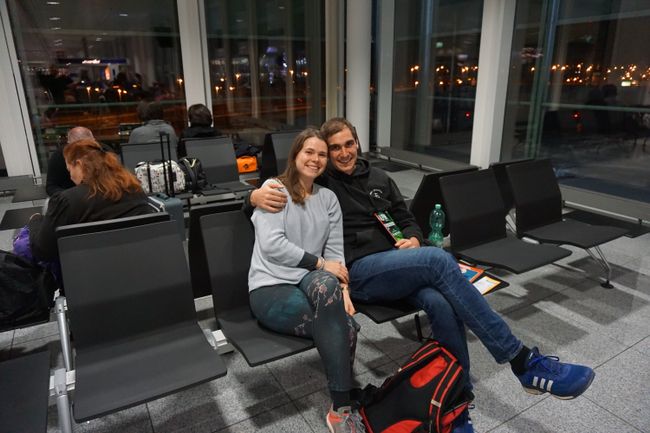
komm-mit-uns-ins-abenteuerland
vakantio.de/komm-mit-uns-ins-abenteuerland
Tana Toraja
ପ୍ରକାଶିତ |: 02.03.2020
ସମ୍ବାଦପତ୍ରକୁ ସବସ୍କ୍ରାଇବ କରନ୍ତୁ |
The overnight bus ride from Rammang Rammang to Rantepao turned out to be quite a comfortable affair, as there were actually two proper beds with blankets and pillows in the back of the bus for us. However, we decided to postpone taking photos until the next morning, as we thought we would have plenty of time for that.
Little did we know, because the next morning we were woken up by a loud 'Goooooood Morning' from Franziska, our homestay owner, who picked us up from the bus and promptly kicked us out.
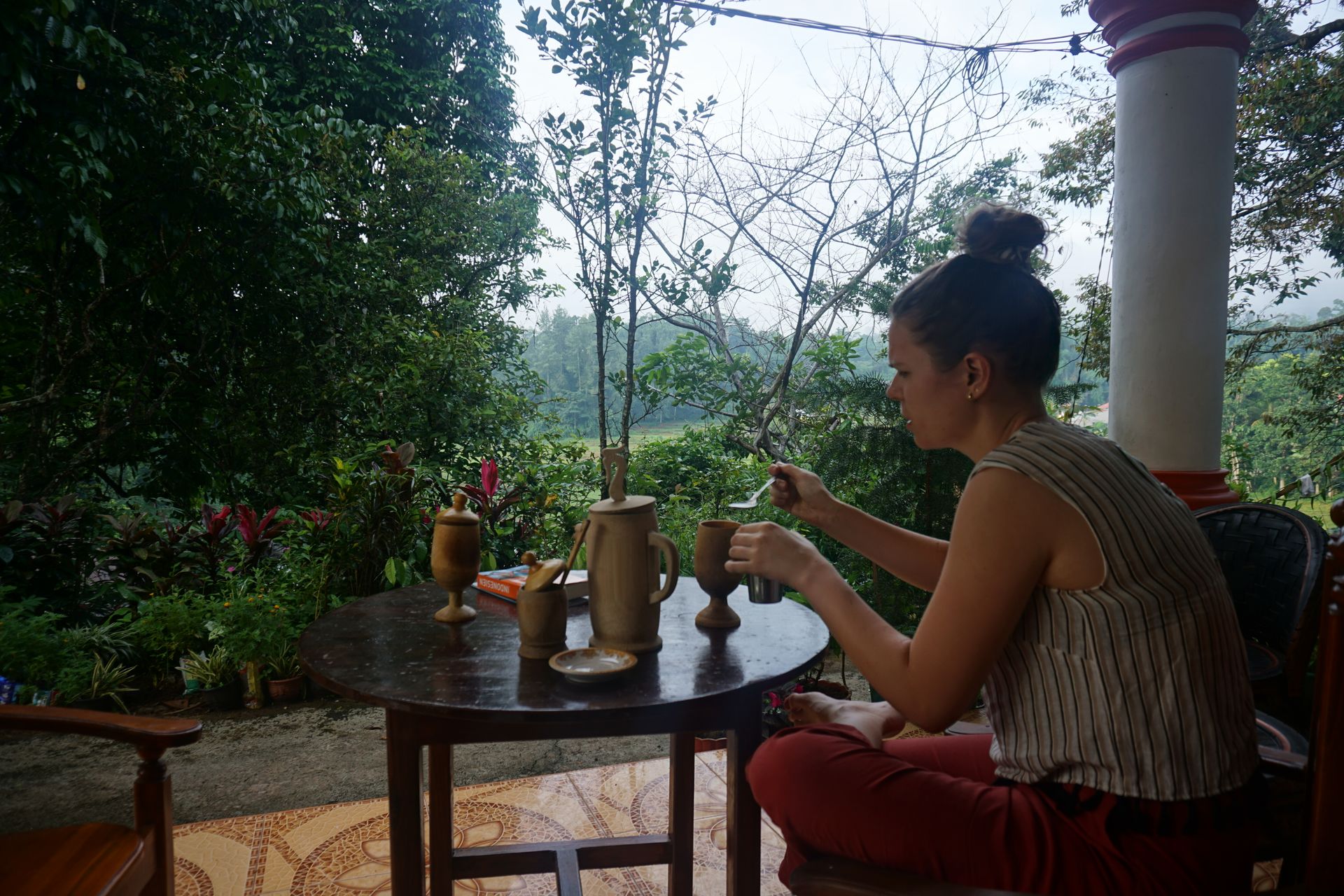
The day truly begins for us on the terrace of her beautiful large house in Nonongan, a mountain village in the Toraja Highlands. But we don't have much time to relax, because later in the afternoon Franziska has organized a visit to a traditional funeral ceremony in a Toraja village.
She quickly dresses us in traditional clothing, which is appropriate, and as a gift we bring a pack of cigarettes, which are always welcome here.
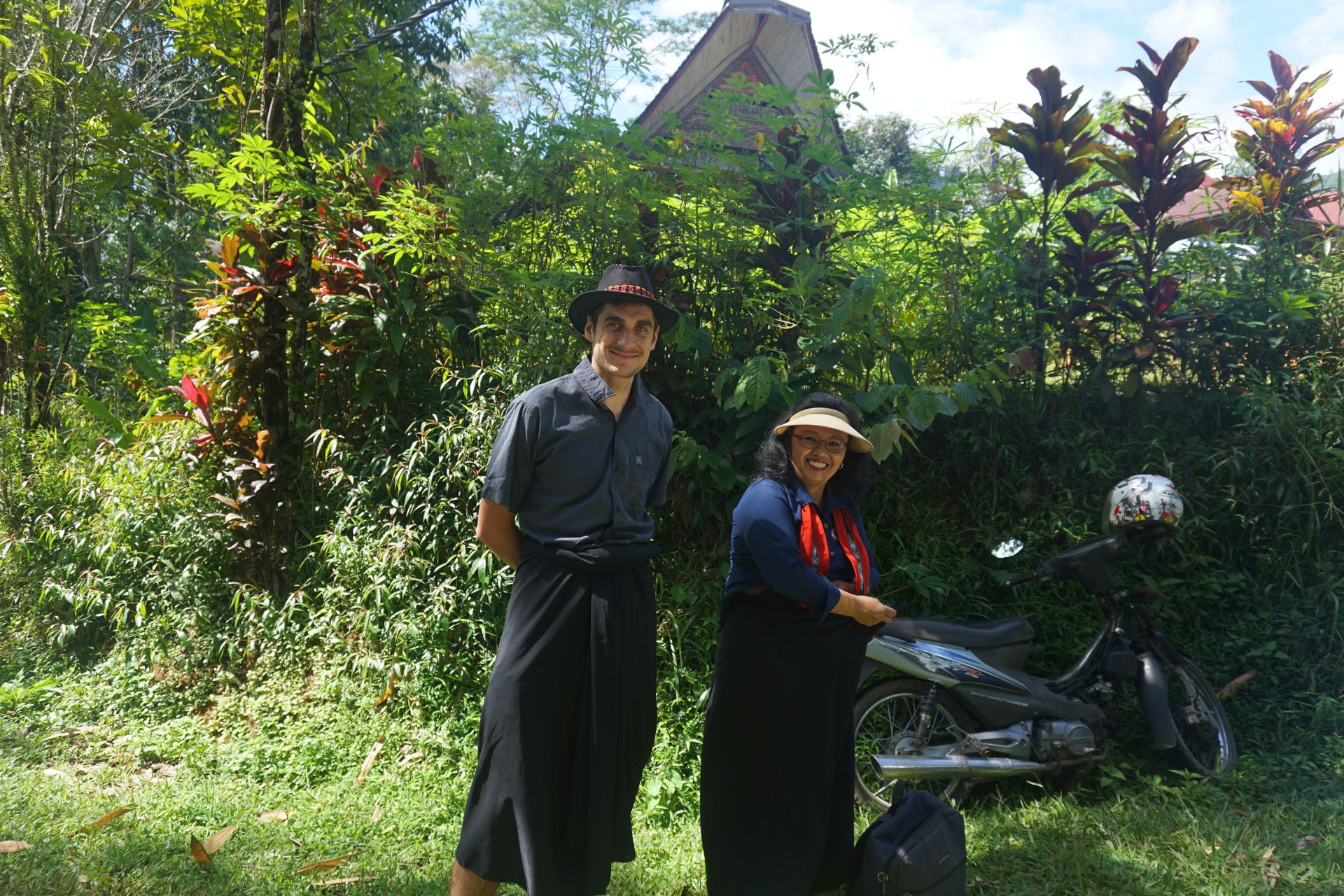
The funeral rituals of the Toraja differ greatly from ours. When a Toraja dies, they are considered 'sick' and remain embalmed in the house until the family can afford a proper funeral ceremony. And these ceremonies can be expensive, lasting between 2-7 days depending on the social status of the deceased. The more buffalo and pigs can be sacrificed in honor of the deceased, the more honorable it is. And of course, all villagers and neighboring villages are invited and encouraged to bring their own offerings.

The lady whose funeral we attended was a respected 90 years old, as one of her sons tells us. We are honored guests to the family of the deceased and are initially invited to have coffee and then a communal lunch with them.

After lunch, the coffin of the deceased is carried from the upper floor of the house to the ground floor, symbolically representing the transition into the world of the dead. We kindly decline the invitation to say goodbye to the deceased face to face.
Before the coffin is finally carried outside the house, marking the deceased as officially dead, a buffalo cow is led onto the village square and ceremonially sacrificed. We will spare the details here, they can be provided upon personal request.
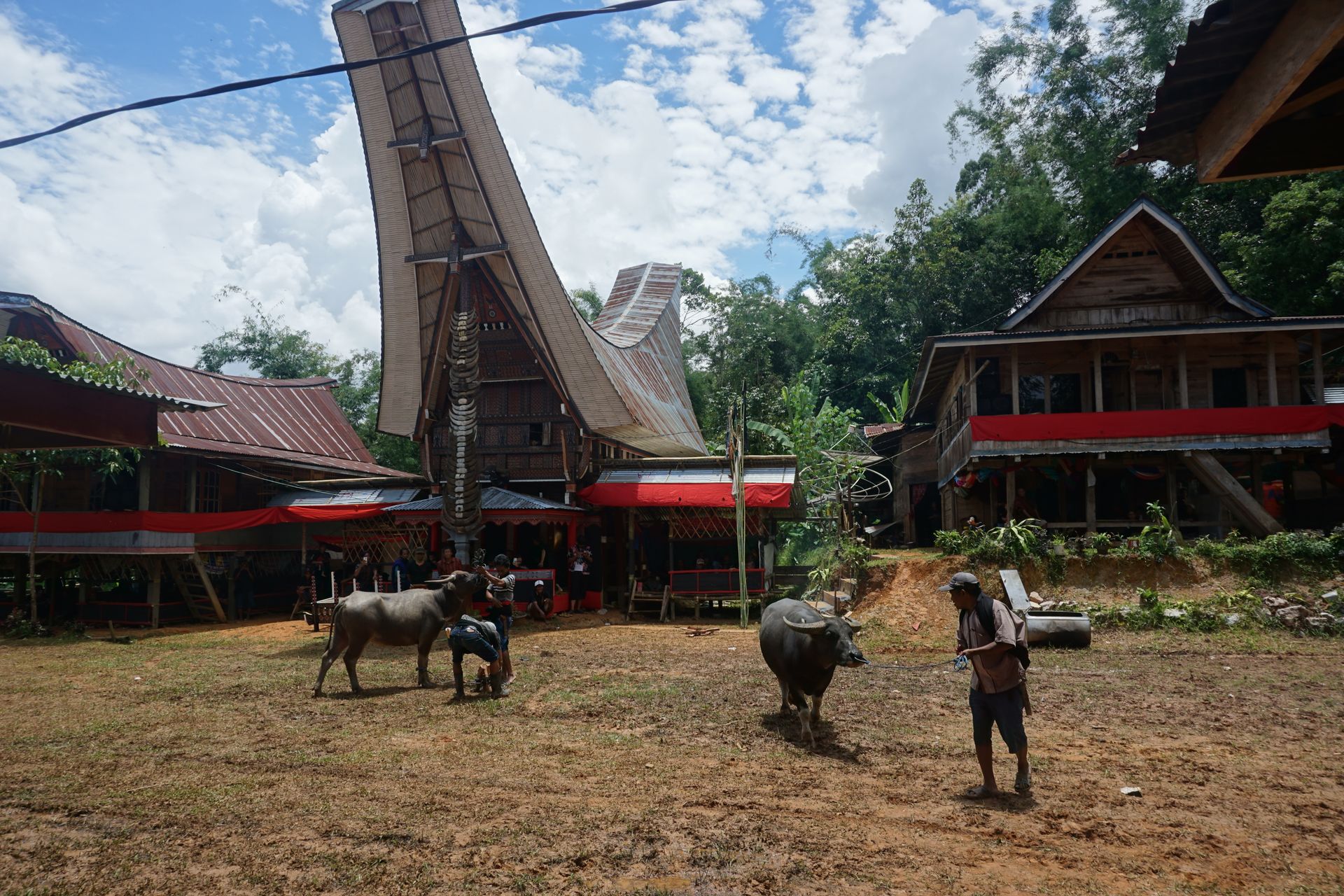
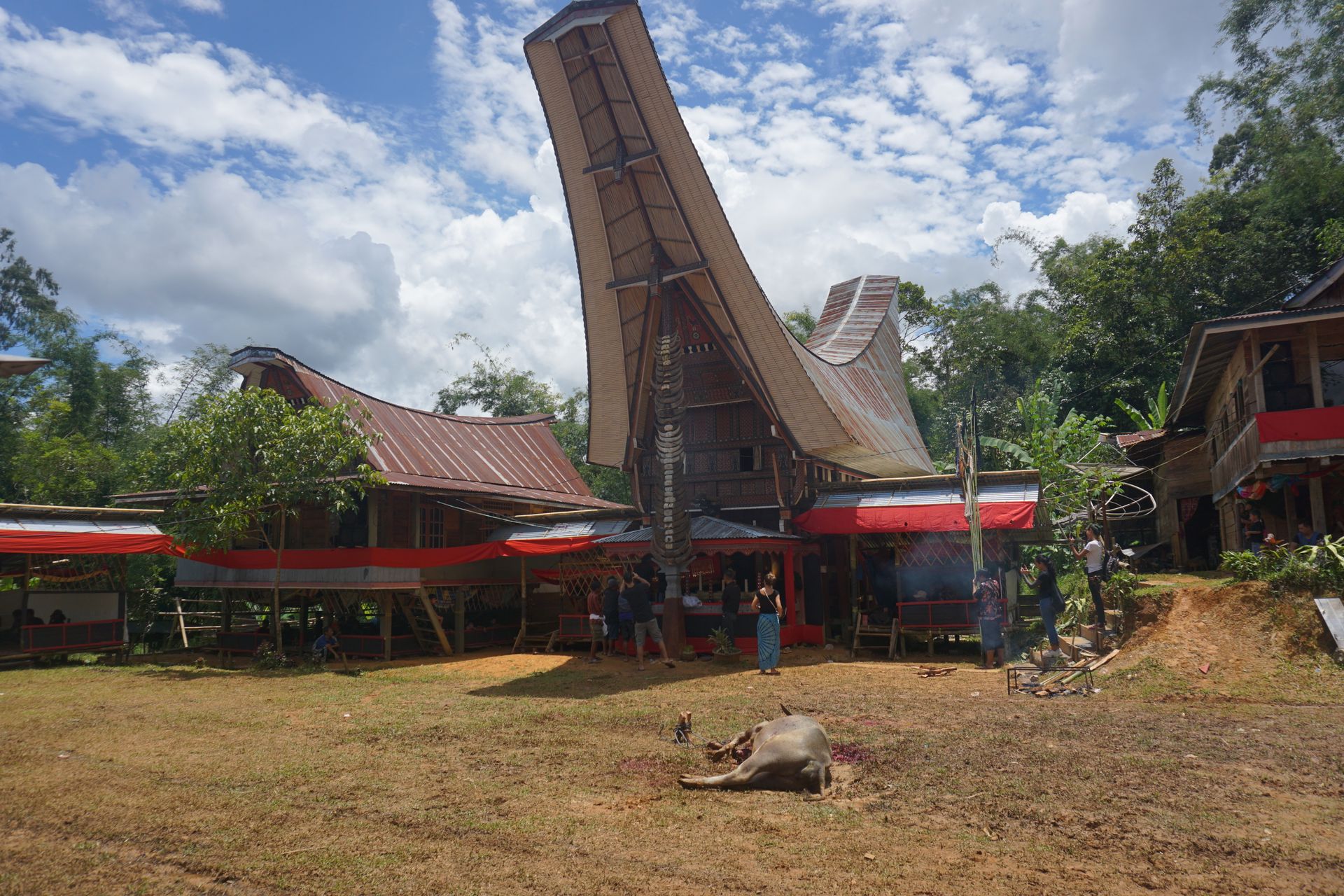
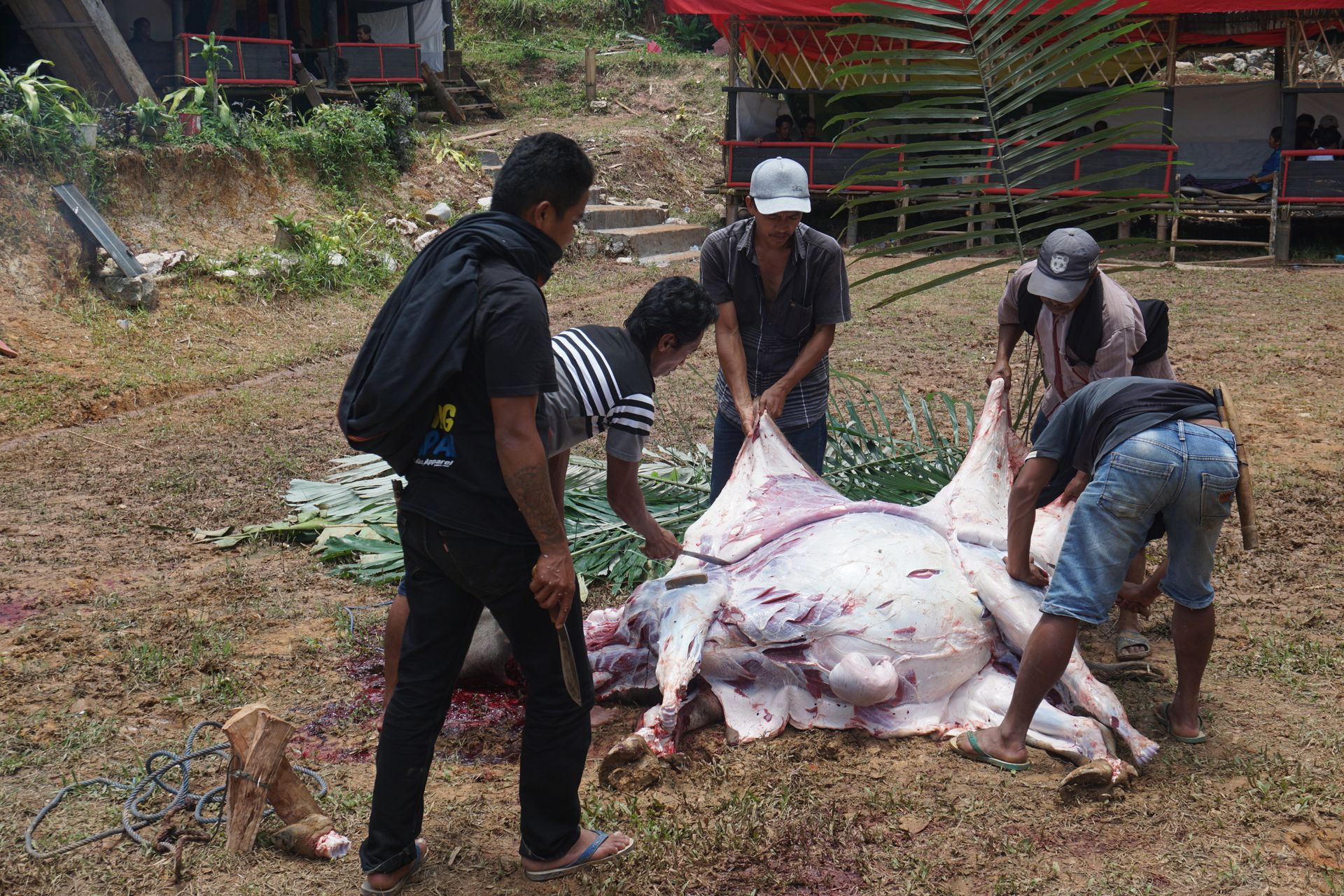
The meat of the buffalo cow is immediately used for the feast.
In the afternoon, we visit the cliff graves of Londa, where the Toraja bury their dead. The rule is that the higher the grave, the higher the social status.

Among the cliff graves are caves where children and the poor are buried. The deceased are given water and cigarettes for their final journey.
At the end of the day, we go to a nearby forest to see a tree where deceased babies have been buried (the last one in 1951), in the belief that the children can continue to live in the tree.
As you can see, death and how to deal with it is a big part of Toraja culture, and it is associated with positive emotions more than with us. Despite the Christian missionary work in the 19th century by Dutch and German pastors, the animistic traditions of the ancestral religions have been preserved.
In the forest, Franziska quickly picks a durian, a spiky, large fruit, which we later get to taste. The flesh tastes like a mix of orange, garlic, and Roquefort cheese, with the consistency of cream cheese. Delicious.

On the following day, we tackle Buntu Sopai, the mountain of Nonongan. We hike through several Toraja mountain villages, where the typical boat-shaped houses, the Tongkonan, are a real eye-catcher. Franziska seems to know everyone in every village, chats with them, and organizes a lunch at her aunt's house after the hike. In another village, a mother sends her daughter into the rainforest for a short time, and she comes back with freshly harvested bananas, passion fruit, and a pineapple. Our summit snack is thus secured.
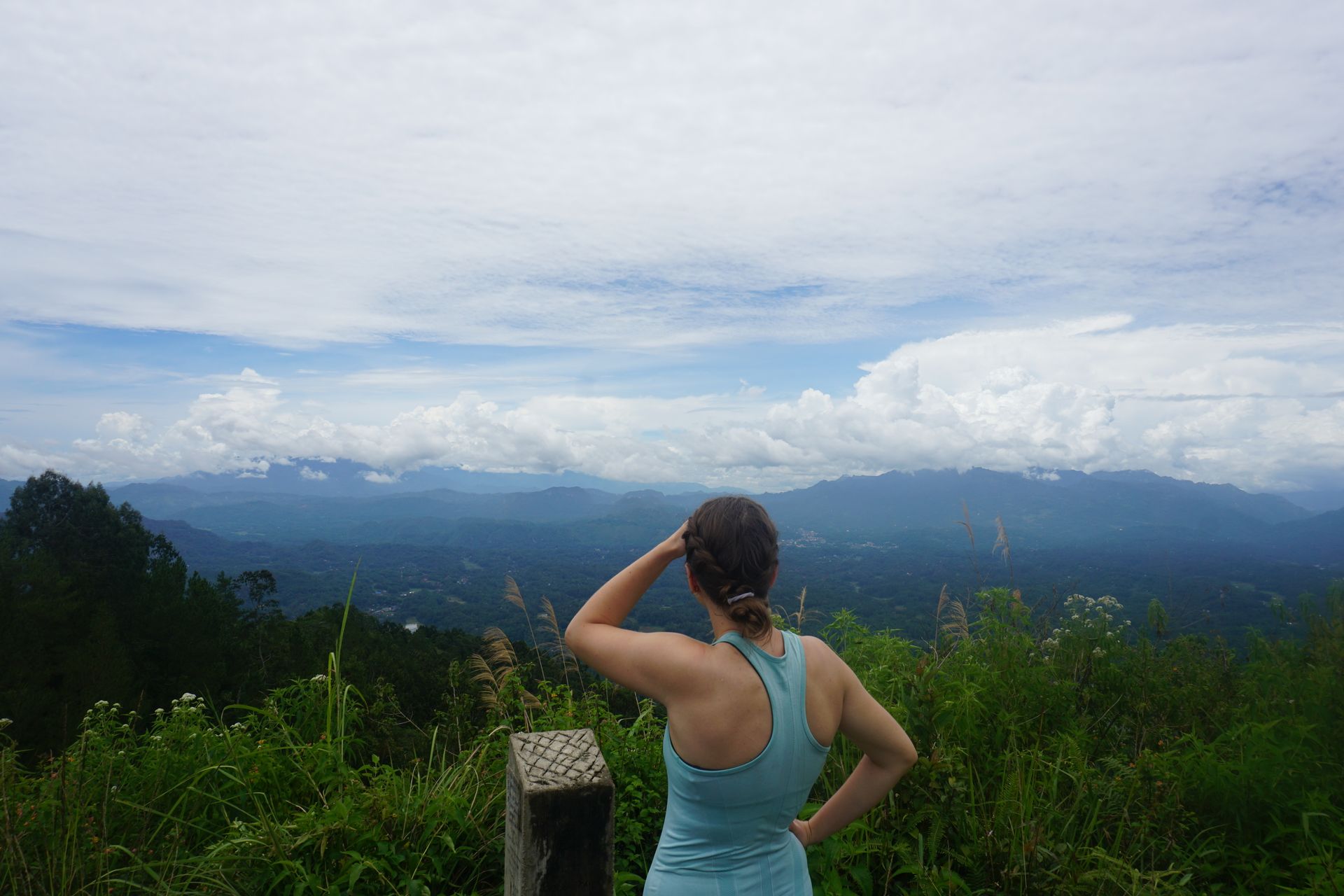
When we reach the summit, we are rewarded with a magnificent panoramic view of the entire Toraja Highlands. The available shelters are perfect for a short fruity break and a (pre-)noon nap.

After the successful descent, Franziska's aunt treats us to a delicious lunch.

In the next village, we happen to come across a rehearsal of the local bamboo orchestra, which sounds amazing!
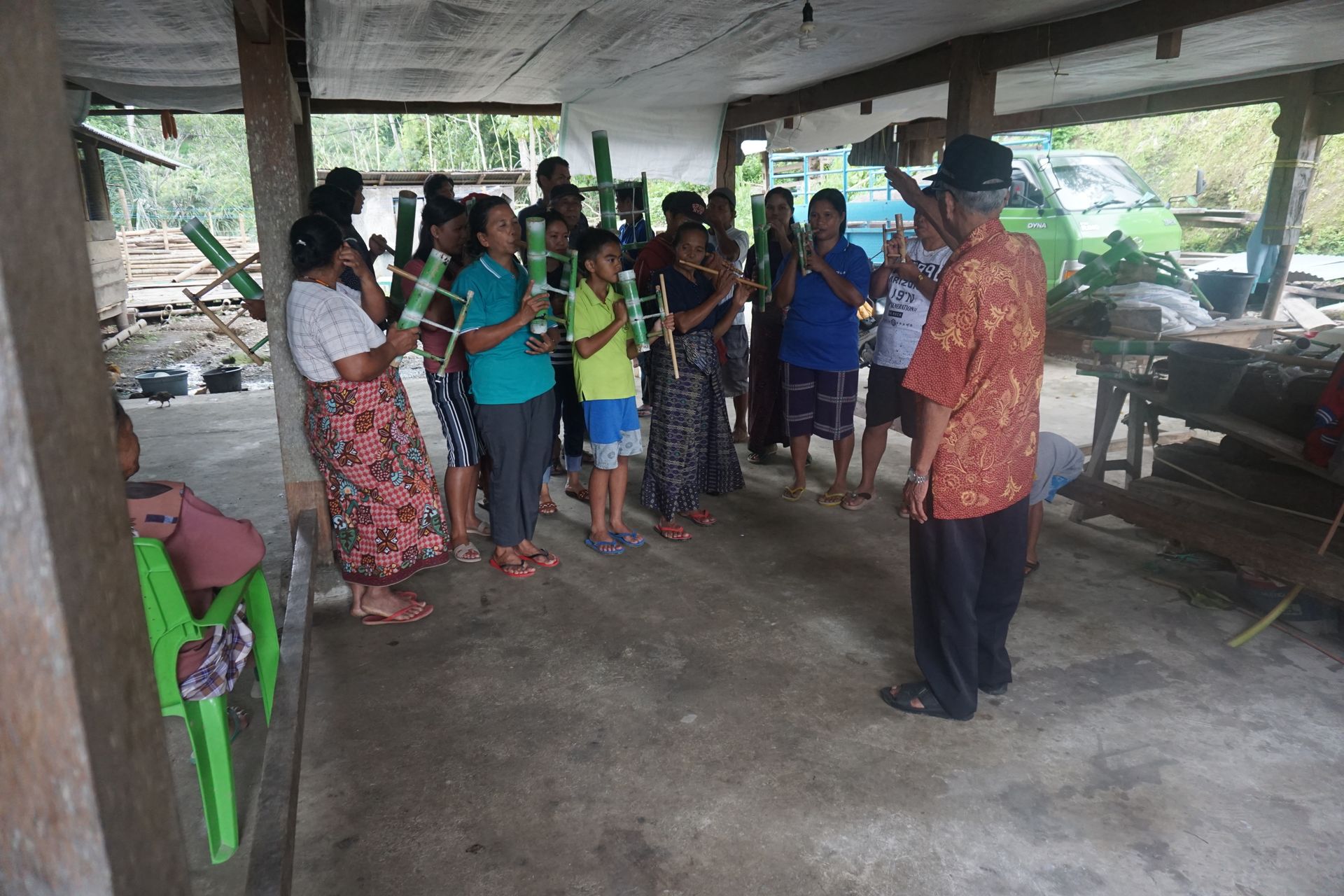
When we are caught in a late afternoon downpour on the last stretch, it turns out that banana plant leaves make excellent umbrellas.
In the evening, we play some music together, and Franziska and Ebi perform their coconut dance for us.
On our last day in the Toraja Highlands, Franziska takes us on a scooter tour to the north.
Of course, we first visit a site for funeral ceremonies, where several megaliths are erected. It works similar to cars with us, the larger and thicker the megalith, the more important the deceased.
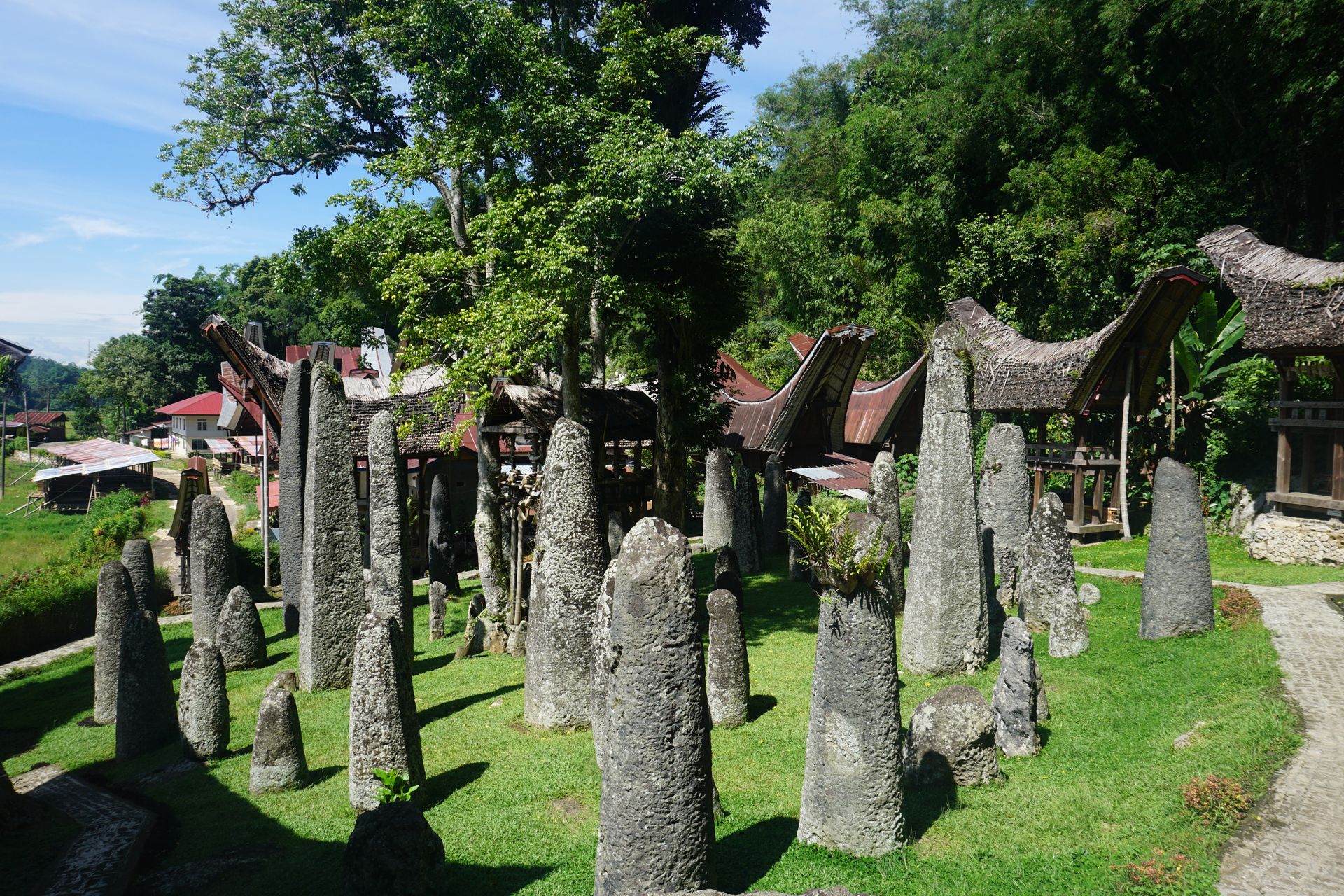
Scooter riding proves to be a pleasant experience, and when we reach the half-height level, we are rewarded with a beautiful view of the rice fields and the highlands.
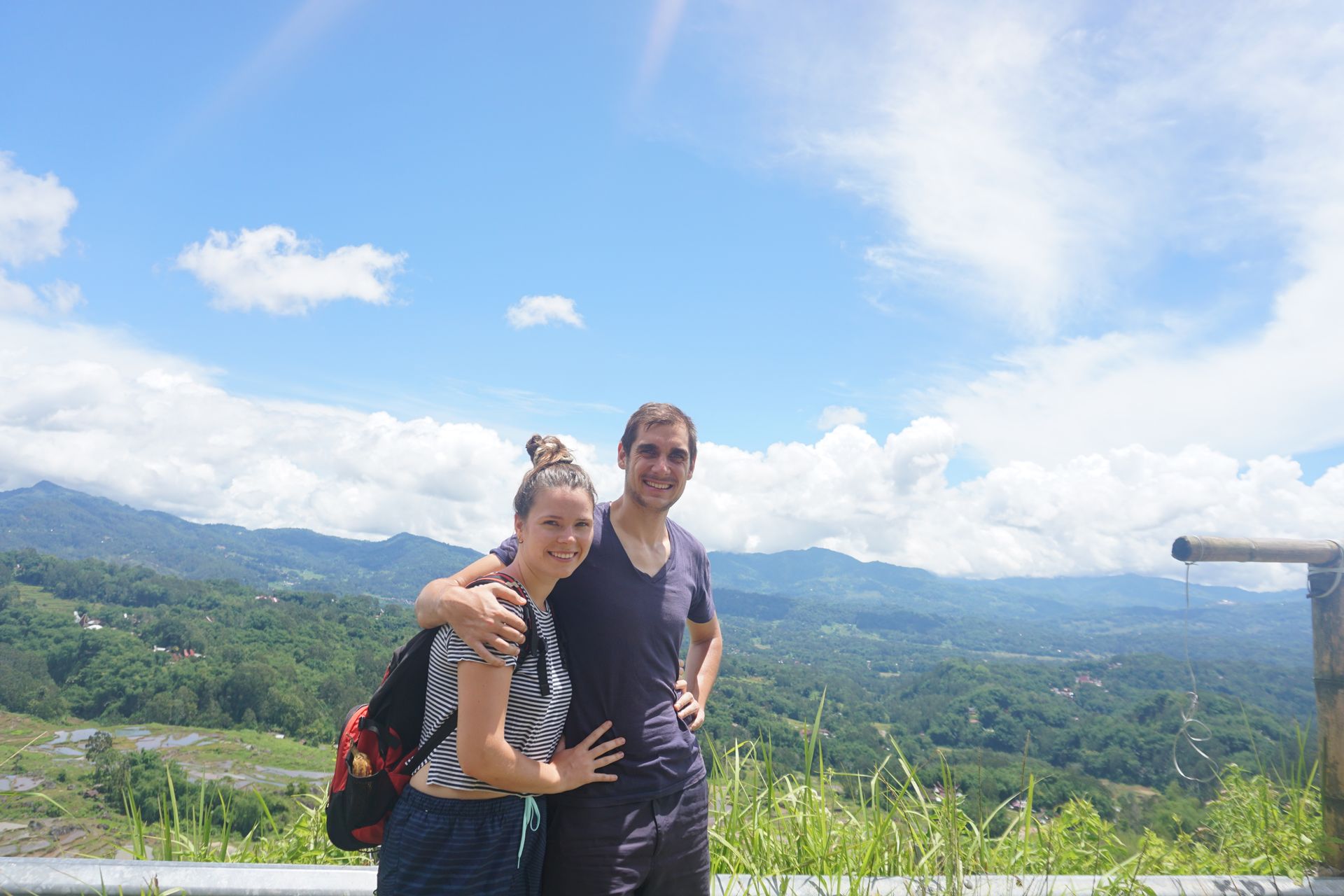
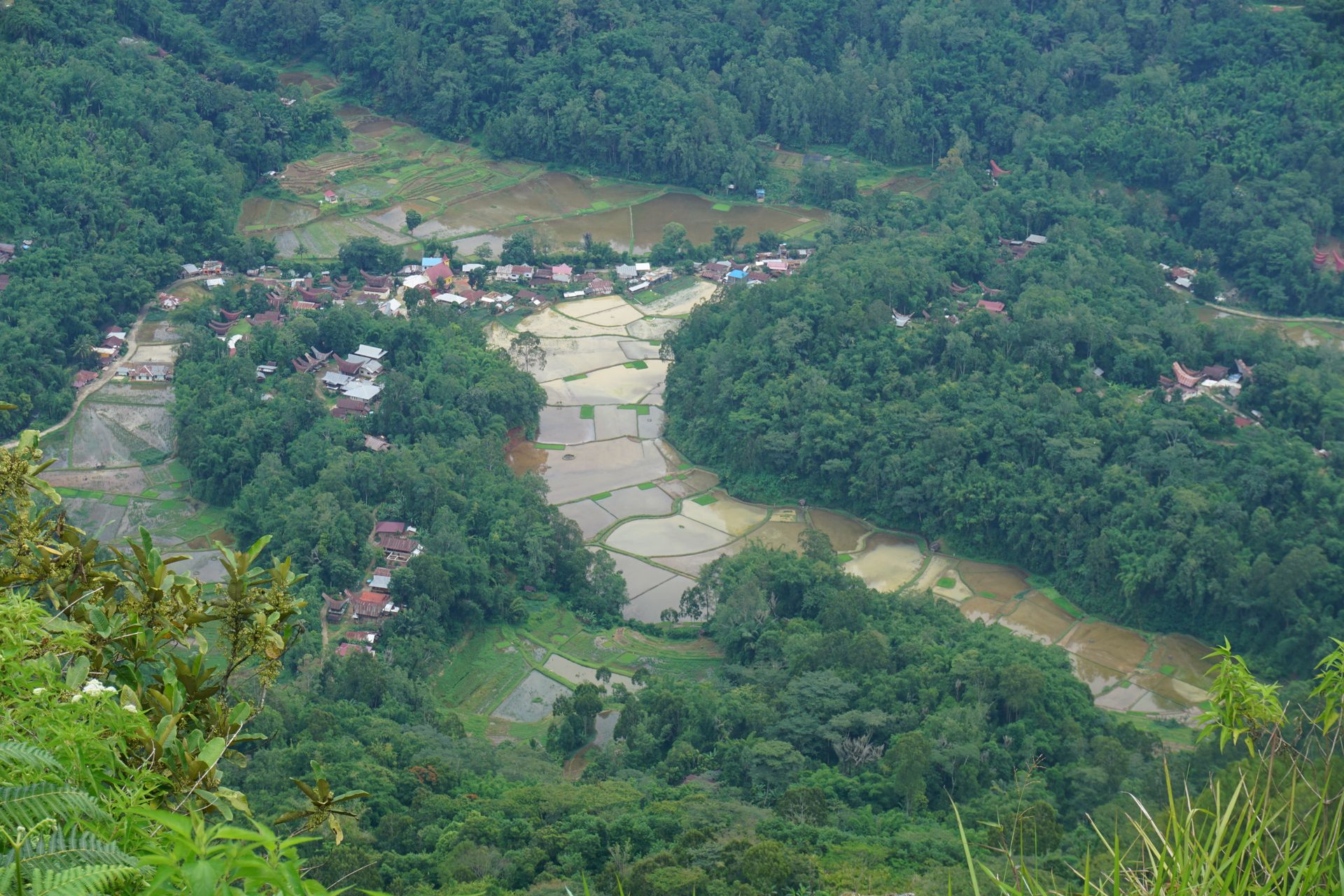
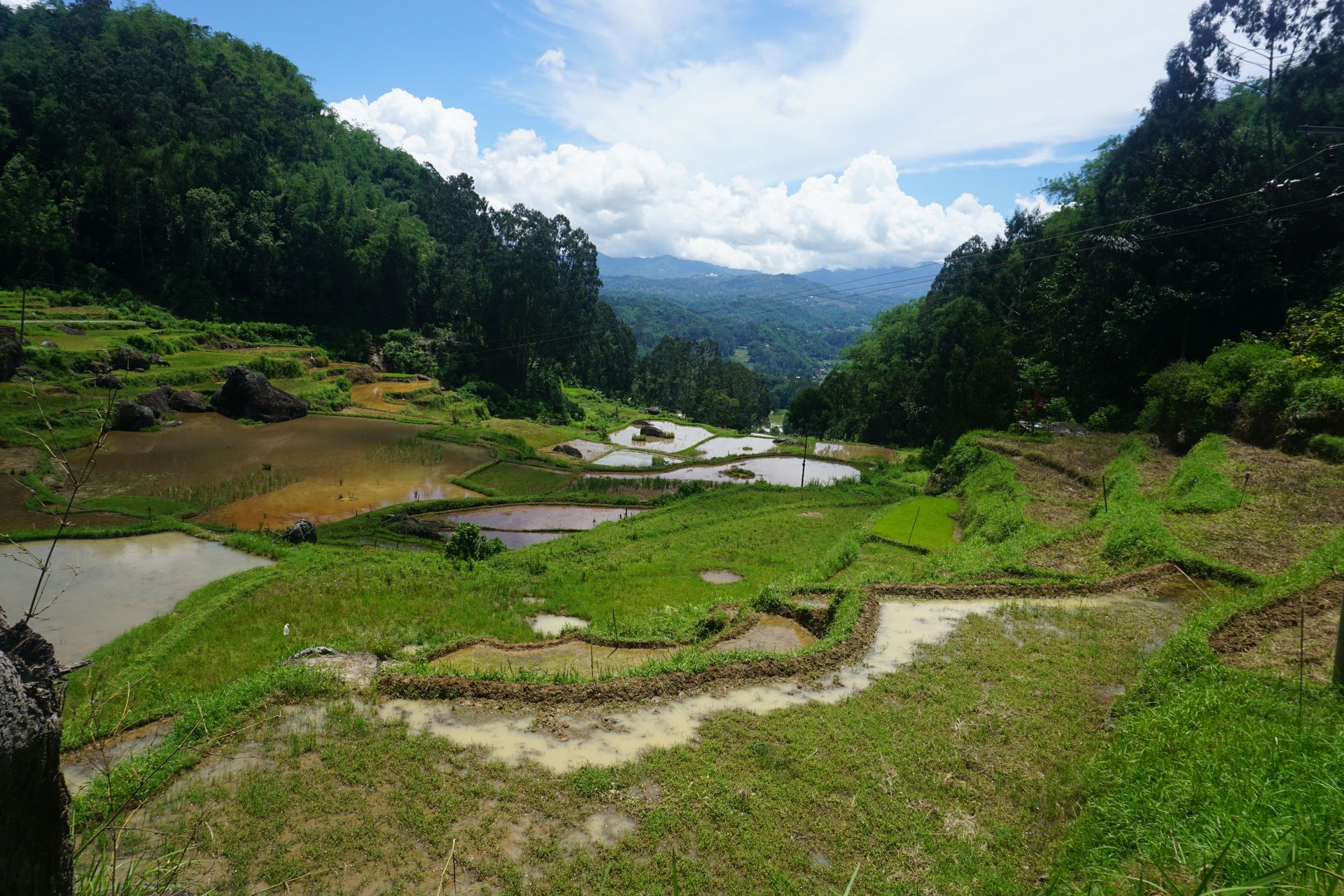
And of course, we must not miss the visit to the funeral rocks of Lembang, where the likenesses of the deceased sit in front of their own graves.

In the afternoon, we visit the market in Rantepao and have a delicious soup together (with filling jelly slime in it).
In the evening, we cook together, Leonie tries her hand at peeling a banana tree trunk, which turns out to be a difficult task, and we have the pleasure of eating buffalo meat (taken from a nearby funeral ceremony of course).
The next morning, after a heartfelt farewell from Franziska and with a hearty packed lunch, we get on the bus to Tentena. The journey will only take about 13 hours..
ସମ୍ବାଦପତ୍ରକୁ ସବସ୍କ୍ରାଇବ କରନ୍ତୁ |
ଉତ୍ତର

